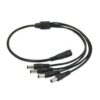4 Way DC Power Splitter CCTV for Security Cameras
4 Way DC Power Splitter CCTV for Security Cameras provides centralized power distribution for multi-camera surveillance installations, eliminating the need for individual power adapters while ensuring reliable operation across all connected devices. This professional-grade splitter simplifies installation procedures and reduces power management complexity in commercial and residential security systems.
Technical Specifications and Power Distribution Capabilities
The 4 Way DC Power Splitter CCTV for Security Cameras incorporates robust electrical design optimized for surveillance equipment requirements:
- Output Channels: 4 independent DC power outputs for camera connections
- Input Voltage: 12V DC input with center-positive polarity
- Output Voltage: 12V DC regulated output per channel
- Maximum Current: 2A total capacity across all four channels
- Individual Channel Rating: 500mA maximum per output channel
- Connector Types: 2.1mm x 5.5mm DC barrel connectors (standard CCTV format)
- Cable Length: 30cm pigtail leads for flexible installation positioning
- Protection Features: Overcurrent protection and short-circuit safety
- Operating Temperature: -10°C to +60°C for diverse installation environments
- Housing Material: ABS plastic enclosure with mounting brackets
- Dimensions: 85mm x 60mm x 25mm for compact installation requirements
The regulated output design ensures consistent voltage delivery to all connected cameras regardless of individual power consumption variations or cable length differences.
Security Camera Compatibility and System Integration
Compatible Camera Types and Power Requirements
The 4 Way DC Power Splitter CCTV for Security Cameras supports various surveillance equipment categories:
Analog CCTV Cameras: Traditional analog security cameras with 12V DC power requirements integrate seamlessly with standard power consumption typically ranging from 200-400mA per camera.
HD-TVI Cameras: High-definition transport video interface cameras requiring 12V DC power operate reliably within the splitter’s current capacity specifications.
AHD Security Cameras: Analog high-definition cameras with 12V power requirements connect directly to splitter outputs without additional adapters or converters.
IP Cameras with DC Power: Network cameras designed for 12V DC operation rather than PoE (Power over Ethernet) connect efficiently to splitter outputs.
Infrared Cameras: Night vision cameras with IR illumination typically consume higher current during night operation, requiring careful current budget management across connected channels.
Power Consumption Planning and Load Distribution
Effective system design requires proper power load analysis:
Current Budget Management: Total connected camera current consumption must not exceed 2A combined capacity, with individual cameras limited to 500mA per channel for stable operation.
Load Balancing Strategies: Distribute high-current cameras (IR-equipped models) across different channels while pairing with lower-consumption standard cameras to optimize power utilization.
Future Expansion Considerations: Reserve power capacity for potential camera upgrades or seasonal power consumption variations during extreme weather conditions affecting IR activation.
Installation Procedures and Mounting Options
Professional Installation Guidelines
Proper installation of the 4 Way DC Power Splitter CCTV for Security Cameras ensures optimal system performance:
Location Selection: Install splitter in protected environment away from direct weather exposure while maintaining accessibility for maintenance and troubleshooting procedures.
Mounting Configuration: Utilize provided mounting brackets to secure splitter to walls, equipment racks, or junction boxes using appropriate fasteners for substrate material.
Cable Management: Route input power cable from main power supply to splitter location using appropriate cable protection and strain relief methods.
Output Distribution: Connect individual camera power cables to splitter outputs using secure connections and proper polarity alignment to prevent equipment damage.
Wiring Best Practices and Safety Considerations
Electrical safety protocols ensure reliable installation:
Power Source Requirements: Connect to regulated 12V DC power supply with sufficient current capacity (minimum 3A recommended) to handle total system load plus safety margin.
Polarity Verification: Confirm proper polarity connections throughout system to prevent camera damage, using multimeter testing before energizing complete installation.
Circuit Protection: Install appropriate fusing or circuit breaker protection at main power supply to protect against overcurrent conditions and short circuits.
Grounding Considerations: Ensure proper system grounding according to local electrical codes and manufacturer specifications for optimal safety and performance.
Performance Analysis and System Reliability
Voltage Regulation and Stability Testing
Electrical performance testing demonstrates the 4 Way DC Power Splitter CCTV for Security Cameras operational characteristics:
Voltage Drop Analysis: Minimal voltage drop across splitter outputs maintains consistent 12V supply to connected cameras regardless of individual load variations.
Load Regulation: Output voltage remains stable within ±2% across varying load conditions from no-load to maximum rated current per channel.
Ripple Suppression: Low-noise output design minimizes electrical interference that could affect camera image quality or system performance.
Thermal Performance: Operating temperature testing confirms stable operation across specified temperature range without thermal shutdown or performance degradation.
Long-Term Reliability Assessment
Durability testing reveals operational longevity characteristics:
Continuous Operation: 24/7 operation testing demonstrates reliable performance over extended periods typical of security system requirements.
Environmental Resistance: Indoor installation testing shows stable performance across typical humidity and temperature variations in protected environments.
Component Aging: Long-term testing indicates minimal performance degradation over multi-year operation periods under normal loading conditions.
Connection Integrity: Connector durability testing confirms secure connections maintain electrical contact through thermal cycling and vibration exposure.
System Design Considerations and Planning
Multi-Camera System Architecture
The 4 Way DC Power Splitter CCTV for Security Cameras enables efficient surveillance system design:
Centralized Power Management: Single power supply feeding multiple cameras reduces installation complexity and maintenance requirements compared to individual adapter installations.
Scalable Installations: Multiple splitters support larger camera arrays while maintaining centralized power control and simplified troubleshooting procedures.
Cost-Effective Design: Reduced power adapter requirements lower initial system costs while simplifying inventory management for installation contractors.
Maintenance Efficiency: Centralized power distribution enables quick identification and resolution of power-related issues without individual camera power adapter testing.
Power Supply Sizing and Selection
Proper power supply selection ensures system reliability:
Capacity Calculations: Size main power supply at 150% of total camera current consumption to provide adequate safety margin and accommodate startup current requirements.
Regulation Requirements: Select regulated power supplies with line and load regulation specifications maintaining voltage within camera operating tolerances.
Efficiency Considerations: High-efficiency power supplies reduce operating costs and heat generation while improving system reliability in enclosed installations.
Backup Power Integration: Design compatibility with uninterruptible power supplies (UPS) for critical security applications requiring continuous operation during power outages.
Troubleshooting and Diagnostic Procedures
Common Installation Issues and Solutions
Frequently encountered problems and effective resolution strategies:
No Power to Cameras: Verify input power supply operation, check splitter input connections, and measure output voltages using digital multimeter to isolate power distribution problems.
Intermittent Camera Operation: Inspect all connections for corrosion or looseness, verify total current consumption does not exceed splitter capacity, and check for overheating conditions.
Poor Image Quality: Eliminate power-related interference by verifying proper grounding, checking for voltage ripple, and ensuring adequate current capacity for all connected cameras.
Individual Channel Failure: Test splitter outputs under load conditions, verify connector integrity, and check for internal component failure requiring splitter replacement.
Preventive Maintenance Protocols
Regular maintenance ensures continued reliable operation:
Visual Inspection: Quarterly inspection of splitter housing, connections, and mounting hardware for signs of damage, corrosion, or thermal stress.
Electrical Testing: Annual voltage and current measurements verify continued compliance with specifications and identify potential degradation before system failure.
Connection Maintenance: Periodic connection inspection and re-tightening prevents gradual loosening that could cause intermittent operation or voltage drop.
Environmental Monitoring: Verify installation environment remains within specified operating conditions to prevent premature component failure.
Cost Analysis and Economic Benefits
Total Cost of Ownership Assessment
Economic evaluation of the 4 Way DC Power Splitter CCTV for Security Cameras implementation:
- Initial Equipment Cost: Lower total system cost compared to individual power adapters for each camera
- Installation Labor: Reduced installation time through simplified wiring and fewer power connections
- Maintenance Efficiency: Centralized troubleshooting reduces service time and diagnostic complexity
- Energy Efficiency: Single larger power supply typically more efficient than multiple small adapters
Return on Investment Considerations
Value proposition analysis for professional installations:
Installation Time Savings: Reduced wiring complexity and fewer power connections decrease installation labor costs for commercial security system deployments.
Maintenance Cost Reduction: Centralized power distribution simplifies troubleshooting and reduces service call duration for ongoing system maintenance.
System Reliability: Professional-grade components reduce failure rates and associated replacement costs compared to consumer-grade individual adapters.
Scalability Benefits: Standardized power distribution approach simplifies system expansion and modification procedures for growing surveillance requirements.
Application Scenarios and Market Segments
Commercial Security Applications
The 4 Way DC Power Splitter CCTV for Security Cameras serves various commercial requirements:
Retail Surveillance: Multi-camera installations monitoring sales floors, storage areas, and entry points benefit from centralized power management and simplified maintenance.
Office Building Security: Corridor and common area monitoring systems utilize efficient power distribution for comprehensive coverage without individual adapter clutter.
Industrial Facilities: Manufacturing and warehouse environments require robust power distribution for security cameras monitoring production areas and inventory storage.
Educational Institutions: Schools and universities implement multi-camera systems for campus security with reliable power distribution supporting continuous monitoring requirements.
Residential Security Systems
Professional residential installations benefit from centralized power management:
Home Security Systems: Multi-camera residential installations provide comprehensive property monitoring with simplified power infrastructure and professional appearance.
Small Business Applications: Offices, shops, and service businesses implement cost-effective security solutions with reliable power distribution for multiple camera locations.
Property Management: Apartment complexes and rental properties utilize centralized power distribution for common area monitoring and security documentation.
Quality Standards and Compliance
Safety Certifications and Standards
The 4 Way DC Power Splitter CCTV for Security Cameras meets relevant safety requirements:
Electrical Safety: Design compliance with low-voltage DC safety standards for consumer and commercial electronic equipment installation.
EMC Compliance: Electromagnetic compatibility testing ensures operation without interference to other electronic equipment in typical installation environments.
Environmental Standards: RoHS compliance and environmental testing confirm suitability for indoor commercial and residential installations.
Quality Assurance: Manufacturing quality control processes ensure consistent performance and reliability across production batches.
Warranty and Support Considerations
Professional support structure for commercial installations:
Product Warranty: Standard manufacturer warranty coverage for defects in materials and workmanship under normal operating conditions.
Technical Support: Installation and troubleshooting assistance for professional installers and system integrators through manufacturer support channels.
Replacement Availability: Consistent product availability for ongoing projects and future system maintenance requirements.
The 4 Way DC Power Splitter CCTV for Security Cameras delivers professional-grade power distribution for multi-camera surveillance installations, providing cost-effective centralized power management with reliable performance for commercial and residential security systems requiring efficient multi-camera power distribution.

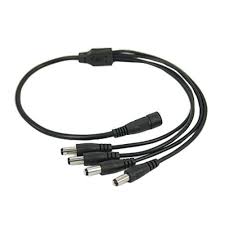
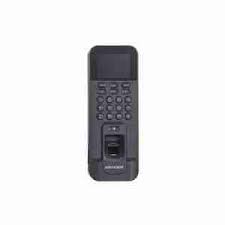
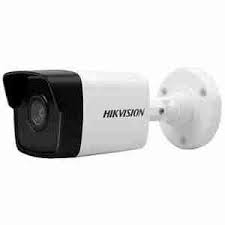

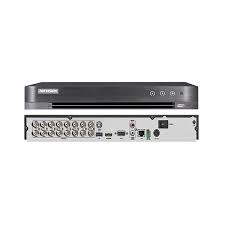
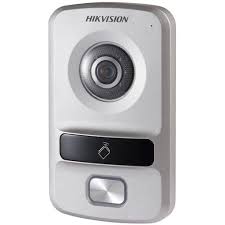
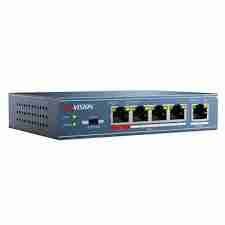

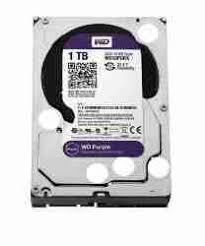
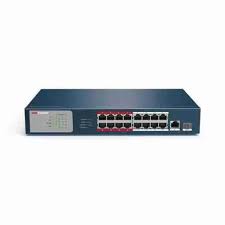
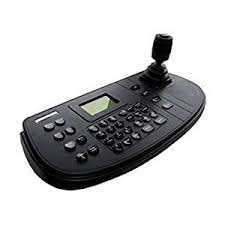
 No products in the cart.
No products in the cart. 